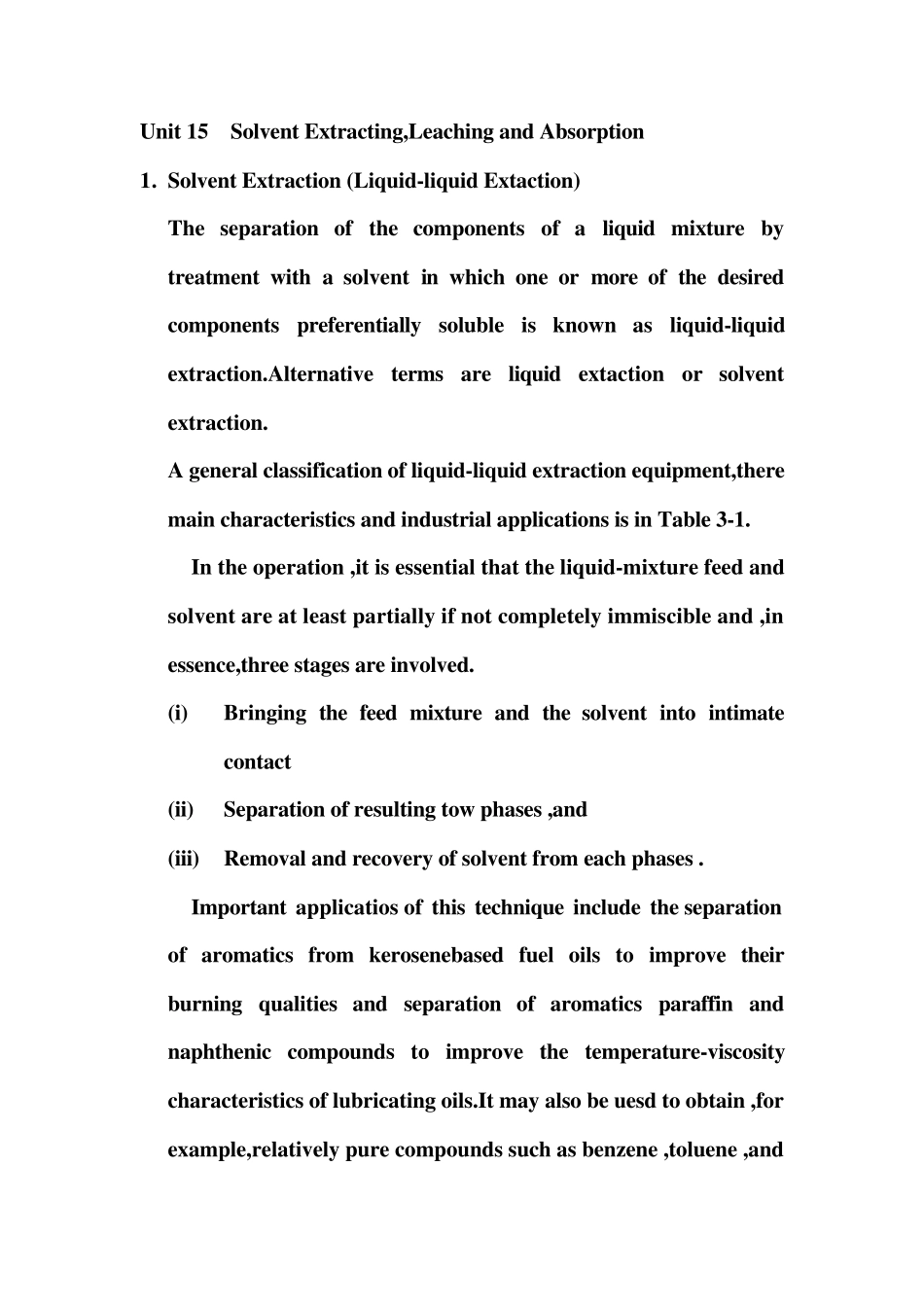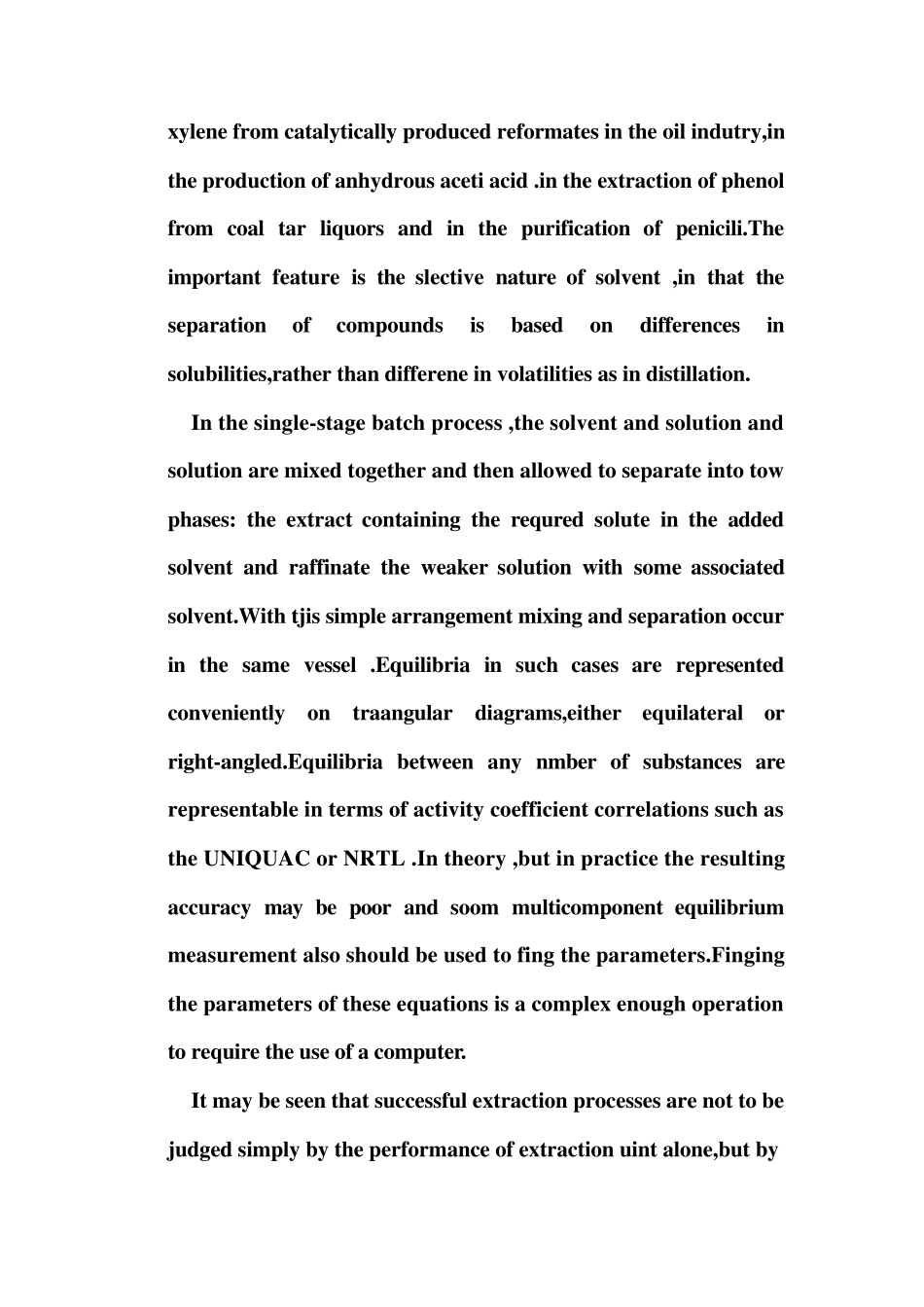Unit 15 Solvent Extracting,Leaching and Absorption 1. Solvent Extraction (Liquid-liquid Extaction) The separation of the components of a liquid mixture by treatment with a solvent in which one or more of the desired components preferentially soluble is known as liquid-liquid extraction.Alternative terms are liquid extaction or solvent extraction. A general classification of liquid-liquid extraction equipment,there main characteristics and industrial applications is in Table 3-1. In the operation ,it is essential that the liquid-mixture feed and solvent are at least partially if not completely immiscible and ,in essence,three stages are involved. (i) Bringing the feed mixture and the solvent into intimate contact (ii) Separation of resulting tow phases ,and (iii) Removal and recovery of solvent from each phases . Important applicatios of this technique include the separation of aromatics from kerosenebased fuel oils to improve their burning qualities and separation of aromatics paraffin and naphthenic compounds to improve the temperature-viscosity characteristics of lubricating oils.It may also be uesd to obtain ,for example,relatively pure compounds such as benzene ,toluene ,and xylene from catalytically produced reformates in the oil indutry,in the production of anhydrous aceti acid .in the extraction of phenol from coal tar liquors and in the purification of penicili.The important feature is the slective nature of solvent ,in that the separation of compounds is based on differences in solubilities,rather than differene in volatilities as in distillation. In the single-stage batch process ,the solvent and solution and solution are mixed together and then allowed to separate into tow phases: the extract containing the...


